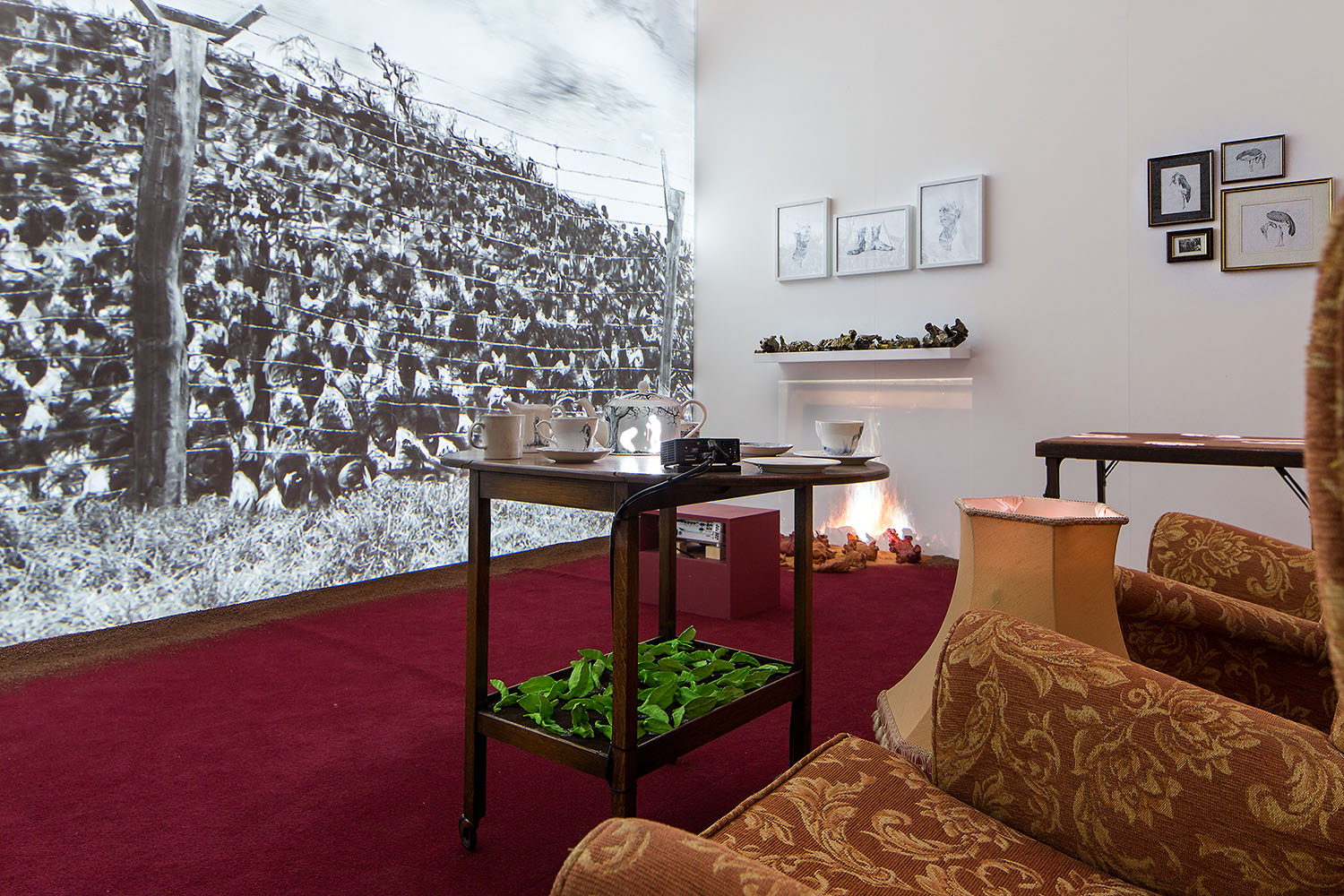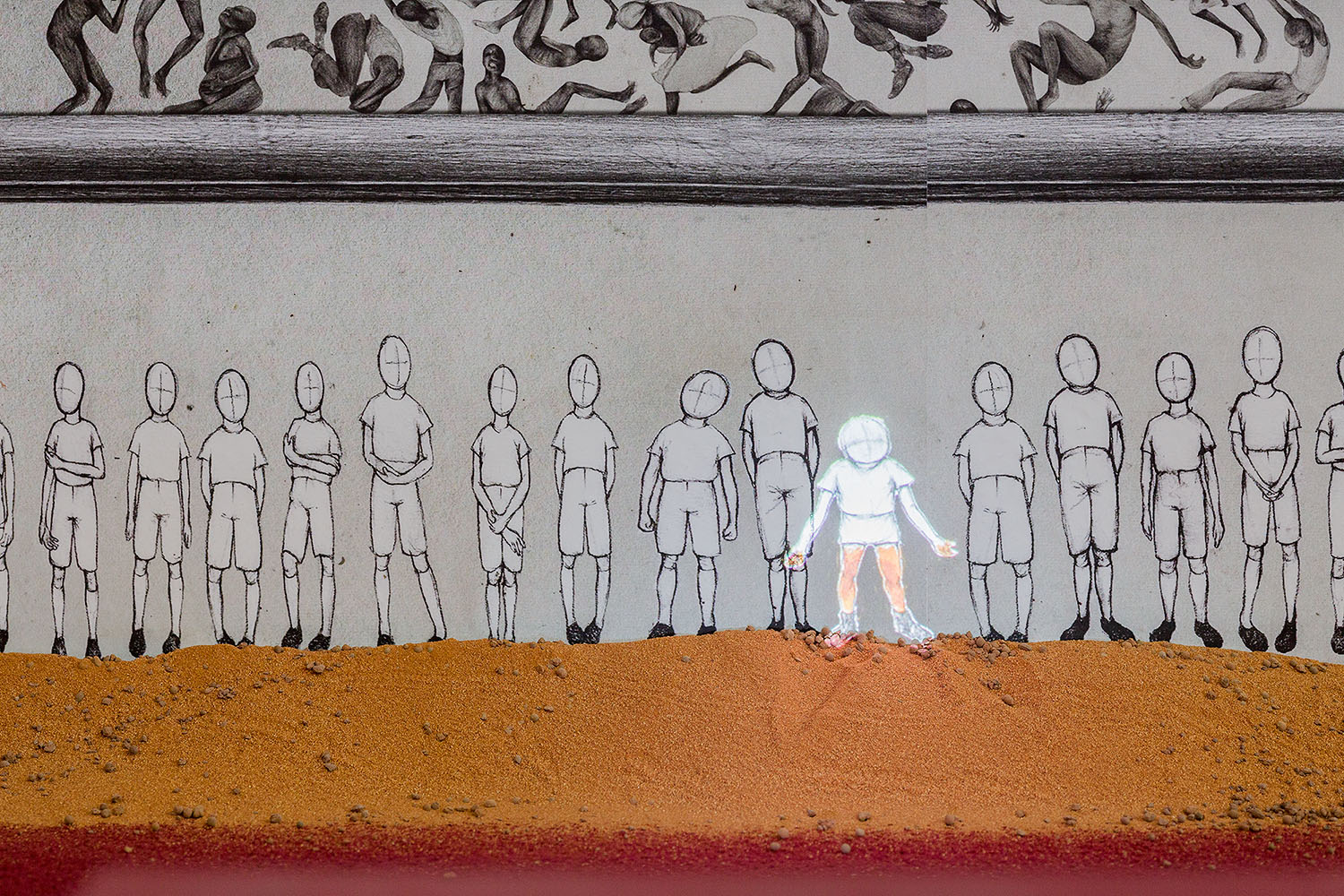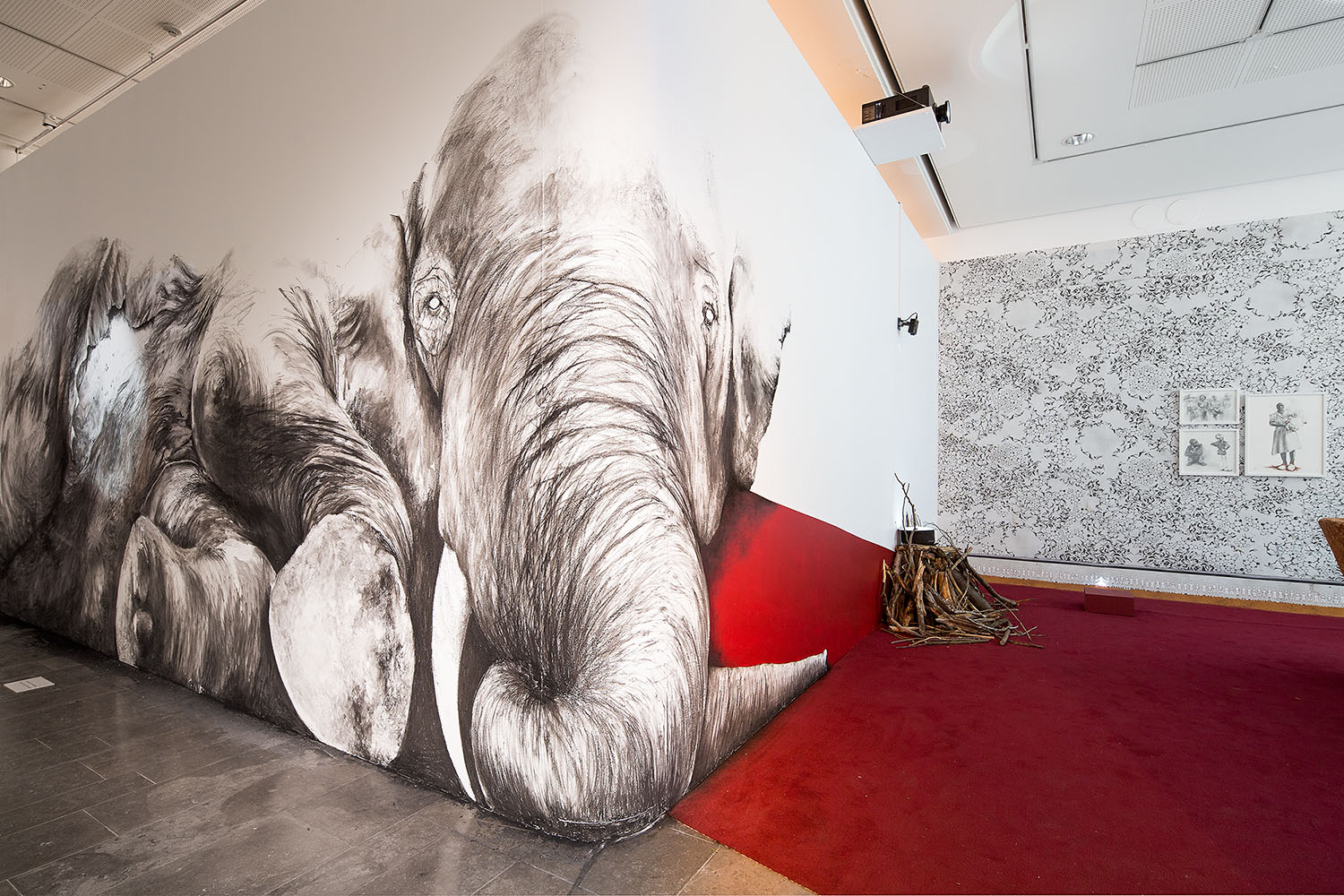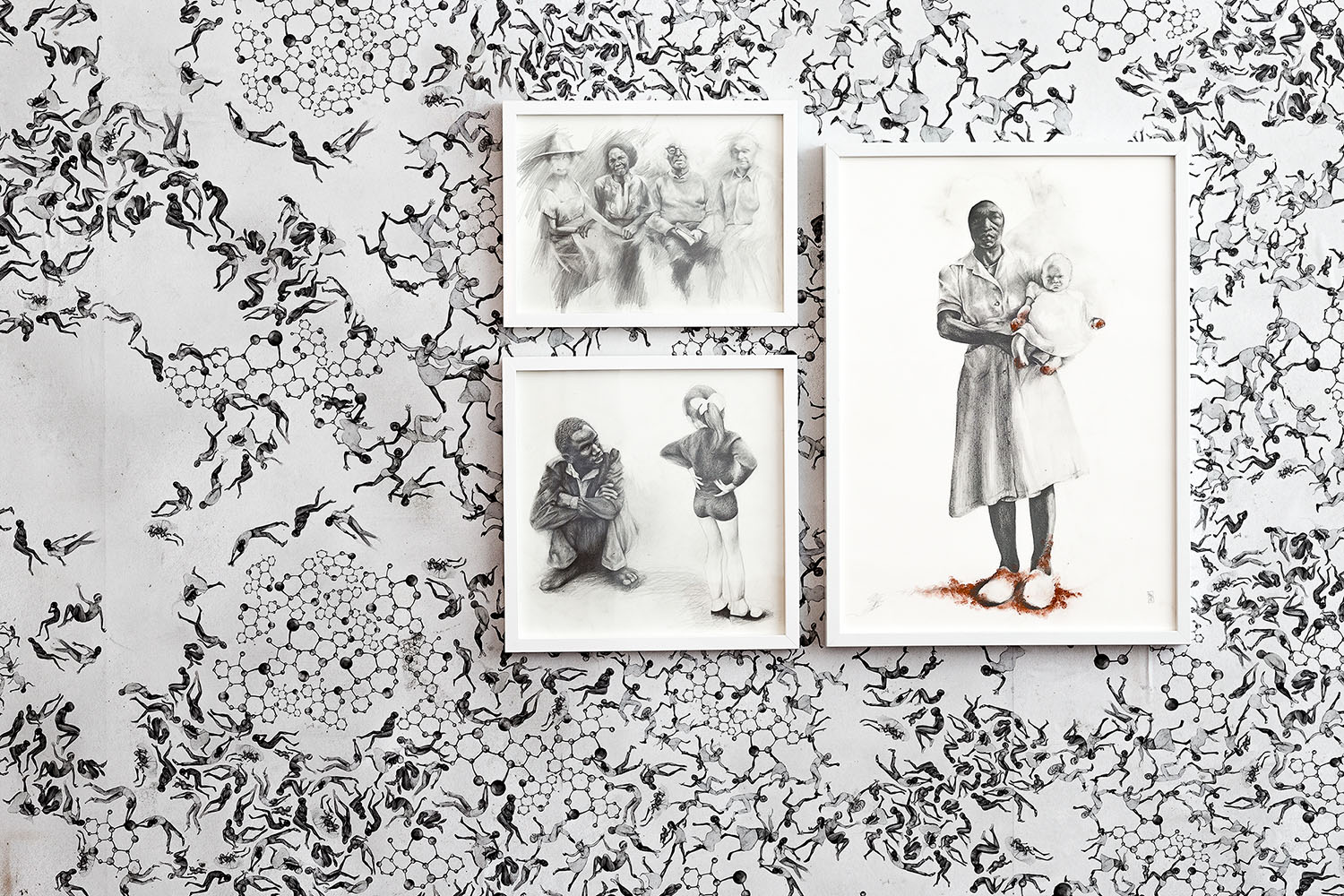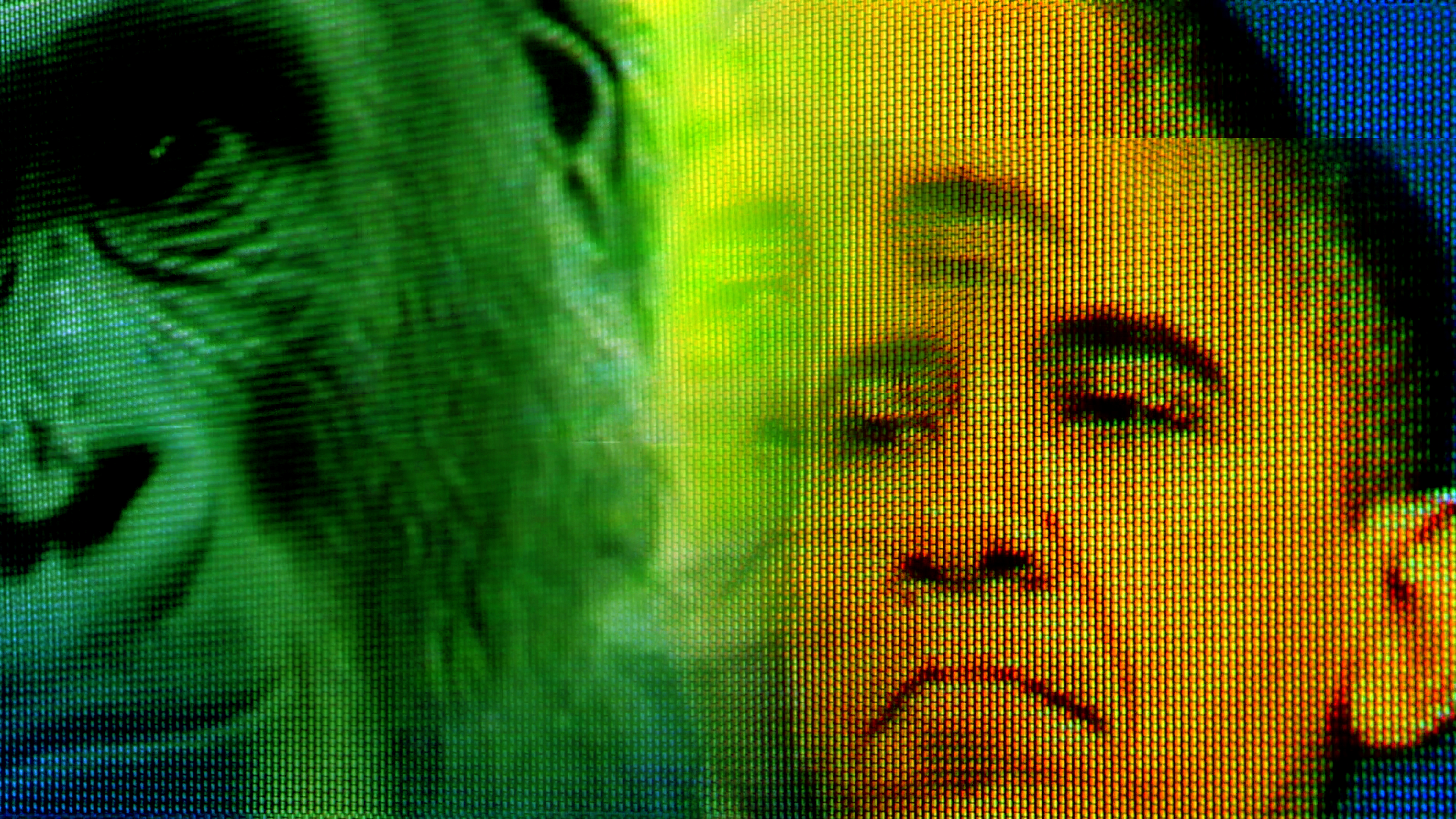Phoebe Boswell is one of the most exciting young artists working today. Her moving-image installation, The Matter of Memory, was exhibited at Carroll / Fletcher Gallery in London in 2014 alongside John Akomfrah and Rashaad Newsome. She is involved in Paul Goodwin’s African Diaspora Artists of the 21st Century project and is currently collaborating with Binyavanga Wainaina on a digital literary project called Since Everything Suddens in the Hurricane.
Her work mainly focuses on ‘transient middle points and passages of migration’, hardly surprising given her upbringing. She was born in Kenya, she spent most of her childhood in the Middle East before coming to London where she now lives and works. She took some time to tell us about her exhibition at the Gothenburg Biennale where she recreated her grandmother’s living room and what’s next for her.
Could you tell us about the Gothenburg Biennale and your piece?
The theme of GIBCA this year is A Story Within a Story, a title allows us as artists the opportunity to really play with the construction of storytelling. Elvira Dyangani Ose is at the curatorial helm of GIBCA and has offered us this title with the aim of contesting history, of rewriting it from new and perhaps previously silenced vantage points.
It’s a Biennale full of works which demand the audience to be active.
Curatorially, she has brought together works that seek to re-examine and possibly debunk predetermined histories, histories constructed in stuffy seats of power in order to control the collective memory of who we are, where we are, why we are, and how we came to be. The question she and the Biennale are asking the audience is: ‘If you could rewrite history, what would you do?’ It’s a very participatory experience. It’s a Biennale full of works which demand the audience to be active.
My piece in it is an immersive installation called The Matter of Memory. Within the Hasselblad Centre of the Gothenburg Art Museum, I have recreated my grandmother’s living room and filled the fabric of it – its wallpaper, teacups, milk pots, lamps, mantelpiece etc – with drawings, props, sculptures, sound and animated projections based on stories my Kikuyu mother and fourth generation British Kenyan father told me of their childhood memories of ‘home’.
The work explores the entrenched brutalities within Kenya’s colonial past and how the remnants of them still exist within the familiarity of our living space. The audience is invited to sit in the armchairs and listen to my parents’ stories with my voice layered over the top, re-speaking their words.
On a personal level, it was a way for me (who grew up outside Kenya) to take ownership of these histories and to acknowledge their presence in order to try to determine my own fragile definitions of ‘home’. It is a piece that nestles perfectly within Elvira’s curatorial theme about rewriting history. It is also a piece very much rooted in family, longing and what it means to belong – or not to.
Your work deals with migration. How have you reacted to the current crisis?
I was born in Kenya, grew up in the Middle East and now live and work in London. So my own narrative anchors a lot of my work in notions of belonging and how we determine what ‘home’ means. I strive to create multi-layered visual languages which are robust and expansive enough to house the kinds of complex stories I want to tell: stories of migrations, conundrums, dualities and middle-points.
We can’t allow more people to drown in murky political waters. We all must be active now, collectively.
In the months leading up to GIBCA, I was back and forth on residencies in Gothenburg, a society I was told upon arrival is extremely segregated. I set out to document my experience of this through drawing, making a metaphorical journey from the predominantly white, Swedish centre of town where my studio was, out to the immigrant suburbs.
The 7-metre-long drawing was exhibited at Blå Stället Kulturhuset in Angered, one of Gothenburg’s largest suburbs as part of GIBCA Extended. Over the course of the residencies, the situation in Europe intensified and I found that suddenly the making of this drawing was more vital than it had been at the start. I began to draw more directly, more furiously and to share parts of the drawing online, adding to the swelling collective voices urging our EU governments to be and do better. There is power in the collective voice.
In September, thousands took to the streets of London, demanding that the government grant safe and decent access to those who need it. I was in Sweden, so joined the rally there and all across Europe, people were doing the same. We can’t allow more people to drown in murky political waters. We all must be active now, collectively.
Which other artists are you particularly excited about seeing at the Biennale?
It’s my first Biennale so it was especially thrilling for me to hear the line-up, and to see just how many artists were on it that I truly admire. I couldn’t believe I was going to be exhibiting alongside Bouchra Khalili, for example. Or Kerry James Marshall. Now that it’s opened, I can honestly say without an agenda, that every work in the show is intriguing and demanding (and worthy) of your time. Of course we all have our stand-outs, but I’m not going to lie, my list is long!

Kerry James’s large-scale drawings, Lynette Yiadom-Boakye’s imagined portraits and benandsebastian’s Museum of Nothing. Kader Attia’s installation pierced my heart. Carlos Motta broke it. The Propeller Group will blow your mind. Nastivicious are the coolest kids. Theo Eshetu taught me loads about how to draw from the archive and still make something resolutely yours and Jacob Kirkegaard’s complex family backstory to his TRISTELAG series is so compelling it makes me smile just thinking about it.
I guess the biggest stand out though, for me, was the curation of the whole.
The quiet of Pia Rönicke’s etchings, Leslie Hewitt’s photographs layered with meticulous meaning, Simon Starling’s haunting documentation of a dancer returning to the place she performed sixty years before at the age of sixteen… this is actually too hard. There are too many. I’ll probably end up saying the whole line-up at this point!
I guess the biggest stand out though, for me, was the curation of the whole. You can really see Elvira’s intentions within it, both intellectually and on a more intimate level. There is a lot of her in the Biennale. That is something that makes it really exciting.
What are your favourite things to do when you head to Nairobi?
I’m not going to pretend I know Nairobi better than I do; I used to go to Kenya a lot as a child, where my days consisted of walking in the tea fields and making elaborate Barbie stories in the garden, high up in Limuru, overlooking the city. But my parents retired to Zanzibar where they run a B’n’B on Matemwe Beach, so I usually go there to recharge and smell home.
I was in Nairobi last year though, plotting with Binyavanga Wainaina on an upcoming collaboration and if there is one person to party with in Nairobi, it’s Binyavanga!
What’s next for you?
I have a solo show titled The Lizards Within Us opening at fourFOLD at Enclave in Deptford, from November 6 – 31. It’s curated by Lanny Walker and I’ll be exhibiting a new body of work, around the subject of frailty and belief systems that I made having spent time with a mganga (spiritual healer) in Zanzibar.
I’ll be telling stories surrounding the work from 4-6pm on November 21. The project with Binyavanga is still in the pipeline. I am also delighted to be working once again under the curatorship of Elvira Dyangani Ose in the near future.
Follow Phoebe on Twitter @PhoebeBoswell
Check out her artwork at phoebeboswell.com

